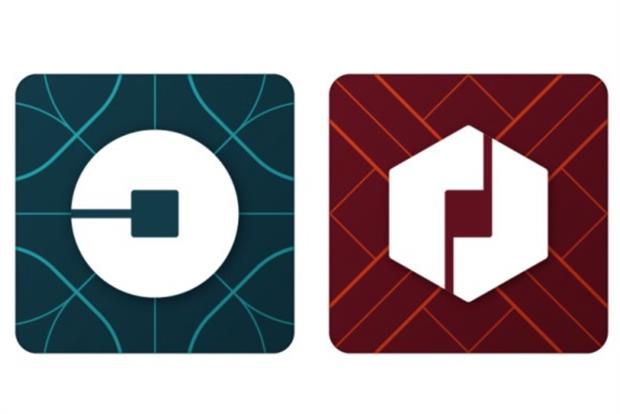Uber’s new abstract, colourful logo draws mixed response from social media

Uber’s new logo: circular for passengers and hexagonal for drivers
Uber has replaced its black-and-white u-shaped logo with an abstract geometric shape that differs in colour according to which country it is being used in, with the new look raising eyebrows across social media.
The corporate identity icon appeared on users’ smartphones overnight in two different shapes – hexagonal for drivers and circular for passengers. The brand overhaul has drawn a mixed response on social media, with many tweeters expressing their dismay.https://twitter.com/joshuatopolsky/status/694675595901407232
The taxi-hailing service has created different coloured versions according to the countries in which it operates. While it is red in China, it is turquoise in India, pink in Mexico, green in Ireland and blue in the UK.Travis Kalanick, Uber’s founder and chief executive, described the old look as “black and white, somewhat distant and cold” and said that it failed to communicate that Uber was a “transportation network, woven into the fabric of cities and how they move”.This is a recurring narrative from Uber, which has long sought to cast itself as more than just a taxi service. Earlier this year, Kalanick acknowledged that the brand had an image problem, and that he needed to learn to tell the brand story. So it was curtains for the old look:
The brand overhaul has drawn a mixed response on social media, with many tweeters expressing their dismay.https://twitter.com/joshuatopolsky/status/694675595901407232
The taxi-hailing service has created different coloured versions according to the countries in which it operates. While it is red in China, it is turquoise in India, pink in Mexico, green in Ireland and blue in the UK.Travis Kalanick, Uber’s founder and chief executive, described the old look as “black and white, somewhat distant and cold” and said that it failed to communicate that Uber was a “transportation network, woven into the fabric of cities and how they move”.This is a recurring narrative from Uber, which has long sought to cast itself as more than just a taxi service. Earlier this year, Kalanick acknowledged that the brand had an image problem, and that he needed to learn to tell the brand story. So it was curtains for the old look:
For another Twitter user, the idea of Uber being “woven in” clearly resonated.
Uber, however is undeterred.In a philosophical and slightly confusing video, the company asks users to “consider the bit, the building block of the digital world.” It goes on to talk about the bit represents Uber’s technology, while the atom represents the brand’s impact on humanity.Kalanick said: “To bring out this human side – the atoms – we’ve added colour and patterns. The team has spent months researching architecture, textiles, scenery, art, fashion, people and more to come up with authentic identities for the countries where Uber operates.”

 The brand overhaul has drawn a mixed response on social media, with many tweeters expressing their dismay.https://twitter.com/joshuatopolsky/status/694675595901407232
The brand overhaul has drawn a mixed response on social media, with many tweeters expressing their dismay.https://twitter.com/joshuatopolsky/status/694675595901407232


